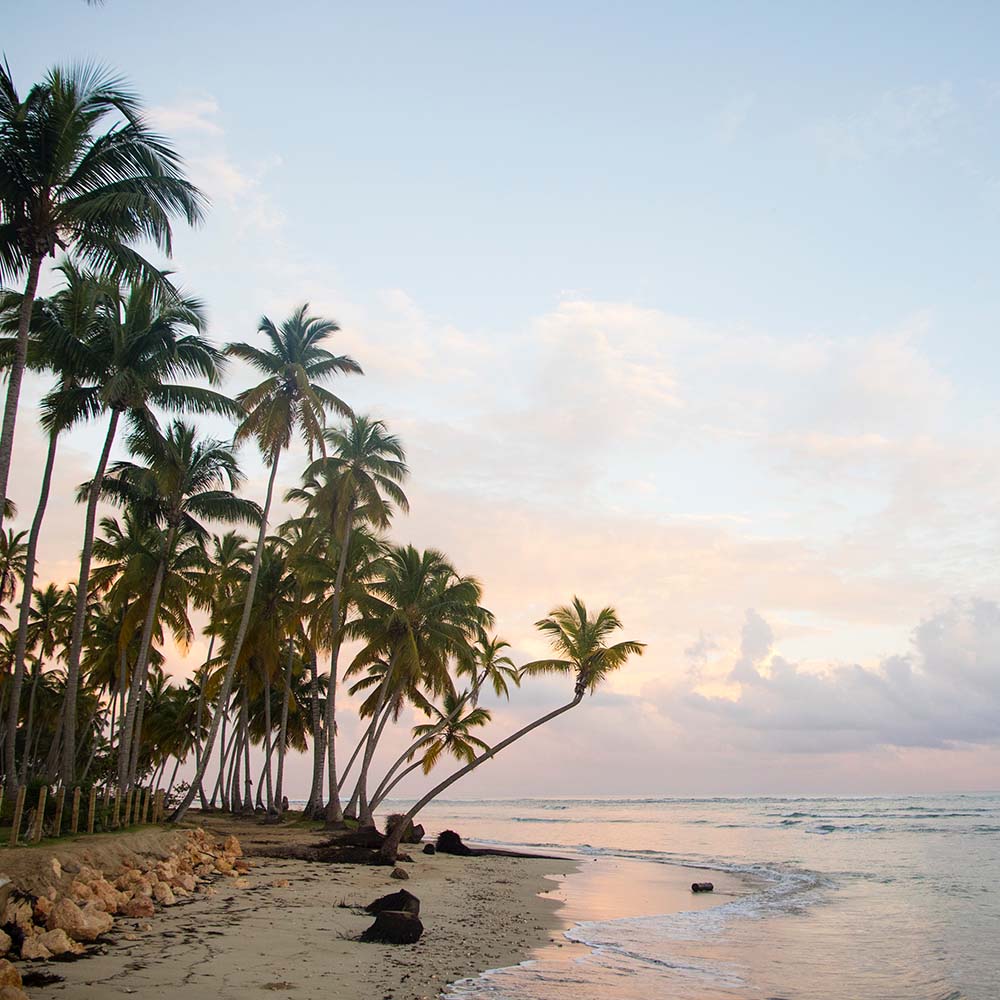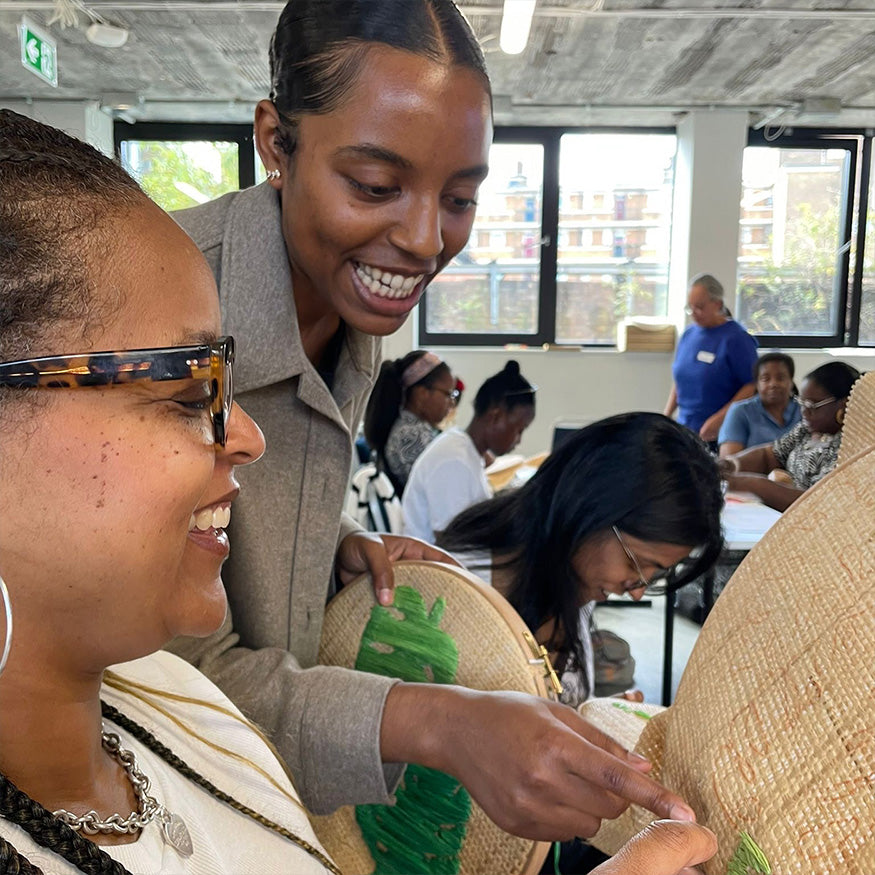Get 10% off with code:

The Caribbean is a beautiful region rich in culture and history, with influences from the indigenous people of the region as well as Africa, Asia and Europe. Geographically speaking, the Caribbean is the region that includes the Caribbean Sea and its islands, as well as the coastal areas of the mainland of the Americas. In this blog post, we will take a closer look at the Caribbean, briefly exploring its history, culture and climate. The hope is that this blog post can act as a springboard for you to research and delve deeper into this fascinating region. It may even inspire you to visit the Caribbean some time soon! ✈️
What is the Caribbean?
At first glance, the question appears to be simple, but the answer is a bit more complex than first anticipated. Geographically the Caribbean is a collection of islands and islets located in the Caribbean Sea, as well as coastal areas of the mainland of the Americas. However, this description based solely on geography fails to encompass the different meanings attached to the term “The Caribbean”. Whilst the islands in the Caribbean Sea have always been included in definitions of the Caribbean, political and historic factors have led to the inclusion of other islands and countries in Central and South America.

To some, the Caribbean only refers to the islands bordered by the Caribbean Sea, but some people include the islands situated outside of the Caribbean Sea like The Bahamas and Barbados. Some definitions include Central American and South American countries like Colombia, Venezuela and Mexico, or even US states like Louisiana or Florida. Others may wonder about the territories located outside of the Caribbean Sea but are historically and culturally connected like Guyana and Suriname. There are also the islands that are geographically located in the Caribbean Sea but are overseas territories of European nations like Saba, Martinique and the Cayman Islands.
People use different approaches and criteria to decide what makes up their Caribbean. Some describe the Caribbean as a territory with a common history of slavery, plantation society and colonisation. However, others focus on a shared culture for their definition, including food, music and lifestyle. Either way, most definitions include a mix of the islands and countries in Central and South America.
The Caribbean Islands Map

There are thousands of islands and islets in the Caribbean that range in size from tiny rocks not suitable for human life, to large islands like Cuba, Hispaniola & Jamaica. The Caribbean islands are divided into these geographical groups:
The Greater Antilles
Includes the large islands Jamaica, Cuba, Puerto Rico and Hispaniola.
The Lesser Antilles
Includes the small islands that curve downwards from Puerto Rico to Trinidad. As well as the ABC islands: Aruba, Bonaire and Curacao, that like Trinidad and Tobago, sit close to the coast of South America. The Lesser Antilles is divided further into the Leeward Islands in the north, and the Windward Islands in the south.
Bahama Archipelago
Also known as Lucayan Archipelago. Located north of the Greater Antilles, this group is made up of hundreds of small islands and cays. Geographically, this group also includes Turks and Caicos. These islands are technically in the Atlantic Ocean but are usually considered part of the Caribbean.
| GLOSSARY | |
| Island | a piece of land surrounded by water |
| Islet | a very small island |
| Cay | a low bank or reef of coral, rock or sand |
| Archipelago | an extensive group of islands |
Caribbean Countries & Territories
See below for a list of countries and territories in the Caribbean region with their location and current status:
Name |
Location |
Current Status |
Anguilla |
Lesser Antilles, Leeward Islands |
British Overseas Territory |
Antigua & Barbuda |
Lesser Antilles, Leeward Islands |
Independent, 1981 |
Aruba |
Lesser Antilles (South American coast) |
Constituent country within the Kingdom of the Netherlands |
The Bahamas |
Bahama Archipelago |
Independent, 1973 |
Barbados |
Lesser Antilles |
Independent, 1966 |
Belize |
Central America |
Independent, 1981 |
Bonaire |
Lesser Antilles (South American coast) |
Special Municipality (Netherlands) |
British Virgin Islands |
Lesser Antilles |
British Overseas Territory |
Cayman Islands |
Greater Antilles |
British Overseas Territory |
Cuba |
Greater Antilles |
Independent, 1902 |
Curaçao |
Lesser Antilles (South American coast) |
Constituent country within the Kingdom of the Netherlands |
Dominica |
Lesser Antilles, Windward Islands |
Independent, 1978 |
Dominican Republic |
Greater Antilles (Hispaniola) |
Independent, 1844/1865 |
Grenada |
Lesser Antilles, Windward Islands |
Independent, 1974 |
Guadeloupe |
Lesser Antilles, Leeward Islands |
Department of France |
Guyana |
South America |
Independent, 1966 |
Haiti |
Greater Antilles (Hispaniola) |
Independent, 1804/1934 |
Jamaica |
Greater Antilles |
Independent, 1962 |
Martinique |
Lesser Antilles, Windward Islands |
Department of France |
Montserrat |
Lesser Antilles, Leeward Islands |
British Overseas Territory |
Puerto Rico |
Greater Antilles |
US Commonwealth |
Saba |
Lesser Antilles, Leeward Islands |
Special Municipality (Netherlands) |
St-Barthélemy |
Lesser Antilles, Leeward Islands |
Overseas Collectivity of France |
St Eustatius |
Lesser Antilles, Leeward Islands |
Special Municipality (Netherlands) |
St Kitts & Nevis |
Lesser Antilles, Leeward Islands |
Independent, 1983 |
St Lucia |
Lesser Antilles, Windward Islands |
Independent, 1979 |
St-Martin |
Lesser Antilles, Leeward Islands |
Overseas Collectivity of France |
Sint Maarten |
Lesser Antilles, Leeward Islands |
Constituent country within the Kingdom of the Netherlands |
St Vincent and the Grenadines |
Lesser Antilles, Windward Islands |
Independent, 1979 |
Suriname |
South America |
Independent, 1975 |
Trinidad & Tobago |
Lesser Antilles |
Independent, 1962 |
Turks & Caicos Islands |
Bahama Archipelago |
British Overseas Territory |
US Virgin Islands |
Lesser Antilles, Leeward Islands |
Unincorporated US Territory |
The Caribbean Climate
The Caribbean islands are consistently warm and humid, and generally pleasant due to the constant trade winds. With the exception of the northern Bahamas, they are positioned south of the Tropic of Cancer, and they are surrounded by water that is warm throughout the year. As a result of this, temperatures on the islands do not vary greatly with the seasons.
While the Caribbean is typically warm, higher elevations in the Greater Antilles can provide a cooler, more temperate climate suitable for crops that wouldn't thrive in a tropical environment.
In general, mountainous islands receive more rainfall than flat islands, and larger islands receive more rainfall than smaller ones. The amount of rainfall is influenced by each island's height above sea level and its size, as different factors come into play.

Except for the northern part of the Bahamas, and the ABC islands, most islands experience two distinct seasons every year:
Dry Season: January/February to April
Rainy Season: May/June to November/December
Caribbean Hurricane Season
Hurricane season exists during the rainy season in the Caribbean and usually begins in the summer. Summers are usually hot and rainy, with June through to November being part of the hurricane season.
Hurricanes are tropical storms that form in the Atlantic Ocean with wind speeds of at least 74 miles per hour. Hurricanes have three main parts, the calm centre (or “eye”), the eyewall where the winds and rains are the strongest, and the rain bands which spin out from the centre and give the storm its size. Generally, hurricanes bring extremely heavy rains. Except at the eye of the storm, the winds are severe.
The course of a hurricane is unpredictable, but they usually travel slowly westward across the Lesser and Greater Antilles. Then they may curve north, reaching the southeastern coast of the United States or dying out on their way. Only Trinidad and the ABC islands are usually away from the destruction of these hurricanes.
The Caribbean Environment
The environment has always been important in the Caribbean. Most people on Caribbean islands made their living from agriculture up until the 20th century. Caribbean islands have always been known for their lush, dense rain forests and plant life – but this environment is very fragile. The moist and warm climate means that chemical weathering and soil erosion occurs quickly and easily. Erosion is worsened when forests are removed for agriculture. Some areas of the Caribbean have been destroyed due to years of erosion.
Although the Caribbean has only made a minor contribution to global climate change (small island states contribute to only 1 per cent of the global greenhouse gas emissions that are causing the climate crisis), it is one of the regions that is most at risk of the damage climate change is believed to cause. Increased hurricanes, more erratic rainfall patterns, rising temperatures and sea levels, are all huge concerns for the Caribbean region today. Heads of government in the region and the United Nations, as well as the resilient people of the islands, are exploring powerful climate solutions to help reduce the impact.
| GLOSSARY | |
| Chemical Weathering | the process of chemicals in rainwater making changes to the minerals in a rock. |
History of The Caribbean
The history of the Caribbean region is rich and fascinating, with stories of exploration, colonisation, and the resilience of its people. The arrival of Christopher Columbus in 1492 is believed to mark the beginning of European exploration in the Caribbean region, which led to the colonisation and formation of sugar and tobacco plantations by the Spanish, French, British, and Dutch. The region also became a major centre for the Transatlantic slave trade. At the beginning of 16th century, millions of African people were captured and forcibly transported across the Atlantic to work as slaves in the Americas on these plantations. The impact of colonisation and slavery has had long-lasting effects on the society, economy, and culture in the region.
However, the Caribbean region is not only defined by its colonial past. The history of the region is a testament to the resilience and strength of its people. Over the centuries, the people of the Caribbean have fought for their independence, leading to the formation of independent nations throughout the 20th century. Today, the Caribbean has a diverse cultural heritage with vibrant mix of African, European, and Indigenous influences.
The Caribbean region has a long, rich and fascinating history with each country and territory having its own interesting story to tell. Be sure to research deeper to learn even more!

We have only briefly explored the Caribbean. in this post. There is so much more to learn about this fascinating region, from its stunning natural beauty to the vibrant cultures that exist throughout it. If you are interested in learning more, I encourage you to do some research and even visit the Caribbean for yourself. I'm sure won't be disappointed!
Sources & Further reading
Photo by Robin Canfield on Unsplash
The Caribbean is a story in any language. Read more
What is the Caribbean? Read more
Thinking through the Caribbean as a region. Read more
What do you mean by the Caribbean anyway? Read more
A brief history of the Caribbean by Jan Rogoziński
Hurricane. Read more
Weathering. Read more
Responding to climate change in the Caribbean. Read more
Caribbean Climatology. Read more
Building resilient futures in the Caribbean. Read more
Rewild: Get to know the Caribbean. Read more
Restoring the Caribbean to the paradise it used to be. Read more
Christopher Colombus. Read more
Transatlantic Slave Trade. Read more
Transatlantic Slave Trade records. Read more
The slave trade and abolition. Read more
Slavery in the Caribbean. Read more









